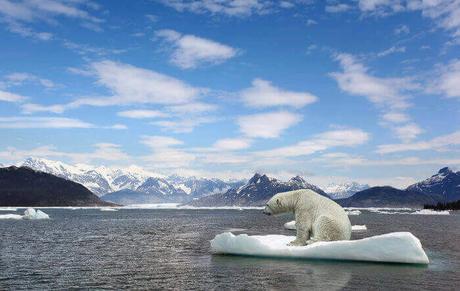
Global Warming, and what we as humanity are doing to help or hinder it, has been hitting the headlines once more recently. President Trump’s recent policy changes that will roll back the Obama administration changes look set to continue this massive global problem.
What is Global Warming?
Global Warming is the phenomenon whereby the planet is experiencing a gradual increase in the overall temperature of our atmosphere. It is most widely believed to be due to increased levels of certain gases and pollutants, such as carbon dioxide and CFC’s, causing what is commonly known as the ‘greenhouse effect’.
Global Warming is thought to be the cause behind a wide range of global problems, such as melting ice caps, sea level change, and more. Importantly, global warming is having a significant impact on the world’s animal and plant species.
Global Warming Effects on Animals and Plants
The planet’s ecosystems work in a complex balance. Global Warming, and its associated temperature change affects this complex balance. Together with other human-caused problems, global warming can therefore severely affect animals, plants and birds. At the moment we are witnessing this through changes in animal and plant global distribution, as well as their behavior. At its worst, it is feared that Global Warming may cause as many as a staggering quarter of all land animals, birdlife and plants to become extinct.
Changes that are being witnessed include things such as birds laying eggs earlier each year, plants blossoming earlier, and animals ending hibernation sooner. But is this actually a problem?
The answer is, unfortunately, yes. For example, the balance of our global ecosystems is so delicate and complex that a sea level rise of just 50cm could cause sea turtles to lose their nesting beaches to the degree that some species are predicted to be extinct. Similar problems threaten the survival of different species of Monk Seals. The problem seems particularly severe for migratory wildlife.
The negative effects on wildlife are not only limited to fauna either. Plants are also at risk of destruction. For example, there has been a gigantic mangrove die-off in Australia linked to climate change. Seagrass and coral have also died off. Overall, it is thought that Global Warming will stunt plant growth.
The Effect on Humans of Changes to Animals and Wildlife Due to Climate Change
It would be an error to think this doesn’t directly affect us. Malaria-carrying mosquitoes extending their range is just one example of how people will directly be negatively affected. There will likely be a reduction in the populations of many of the fish we rely on for our diets. These are just two examples of a range of negative associations of Global Warming that are often overlooked in terms of the big headlines of flooding, droughts, and severe weather events.
Beyond this we also need to consider the impacts of Global Warming on our health and well-being, viewing the problems faced by flora and fauna as an early warning sign of what’s to come. Air pollution causes a wide range of problems, most notably those of a respiratory nature, and allergies increase. Water sources are threatened. And as temperatures rise so do deaths related to higher temperatures such as cardiovascular disease and kidney disease. If we can’t listen to what the world’s animal and plant life are telling us about the dangers of global warming, we should at least be able to listen to problems directly affecting us.
Global Warming – What Individuals Can Do
The reality is that many of the causes of Global Warming come about from big industry. However, we can all take steps to reduce our own carbon footprint and reduce our impact on Global Warming. Specifically, consider installing solar panels for your energy requirements. Installing solar panels may not be as expensive as you think, will save you money over time, and may even make you money if your panels create a surplus of energy.
